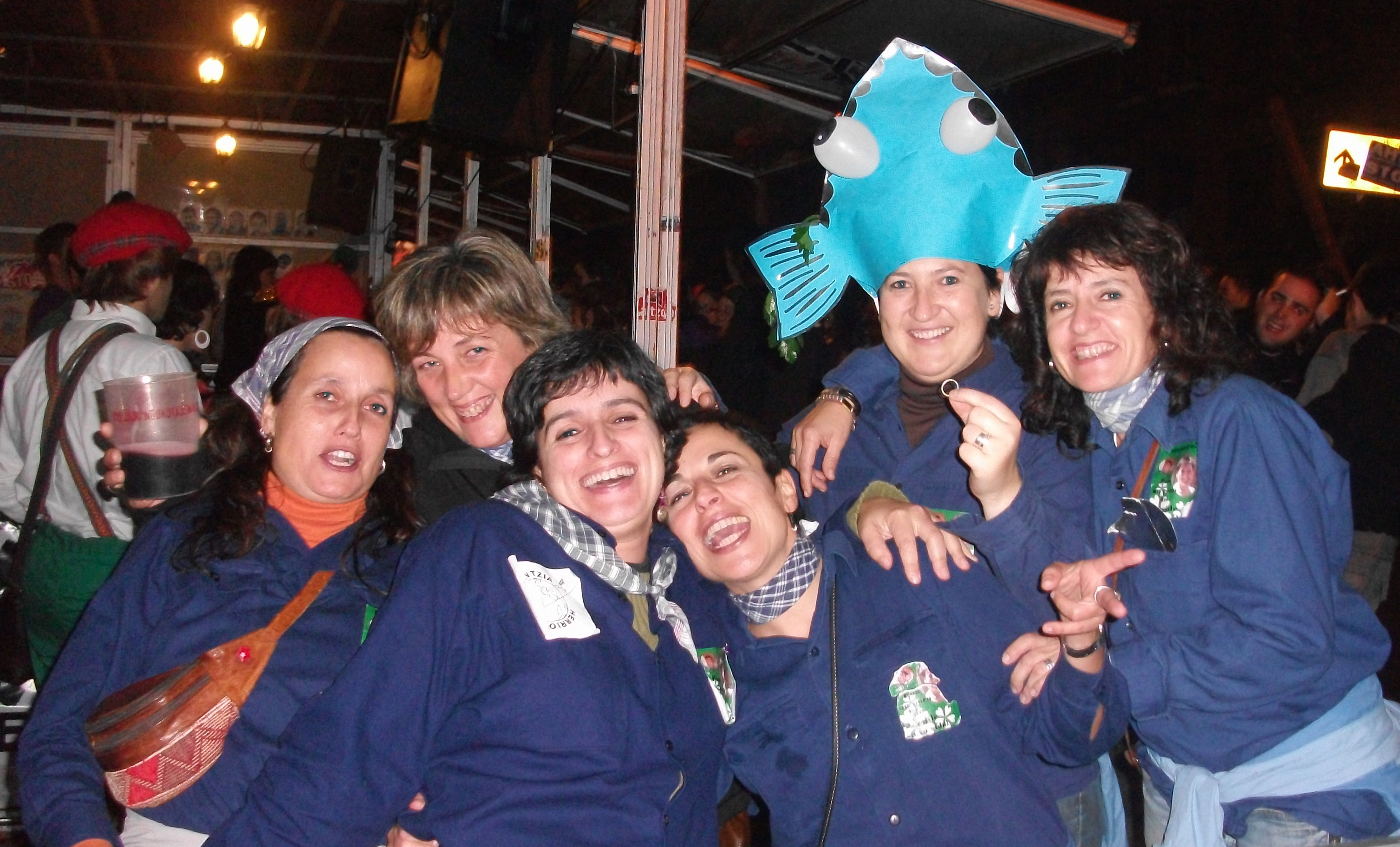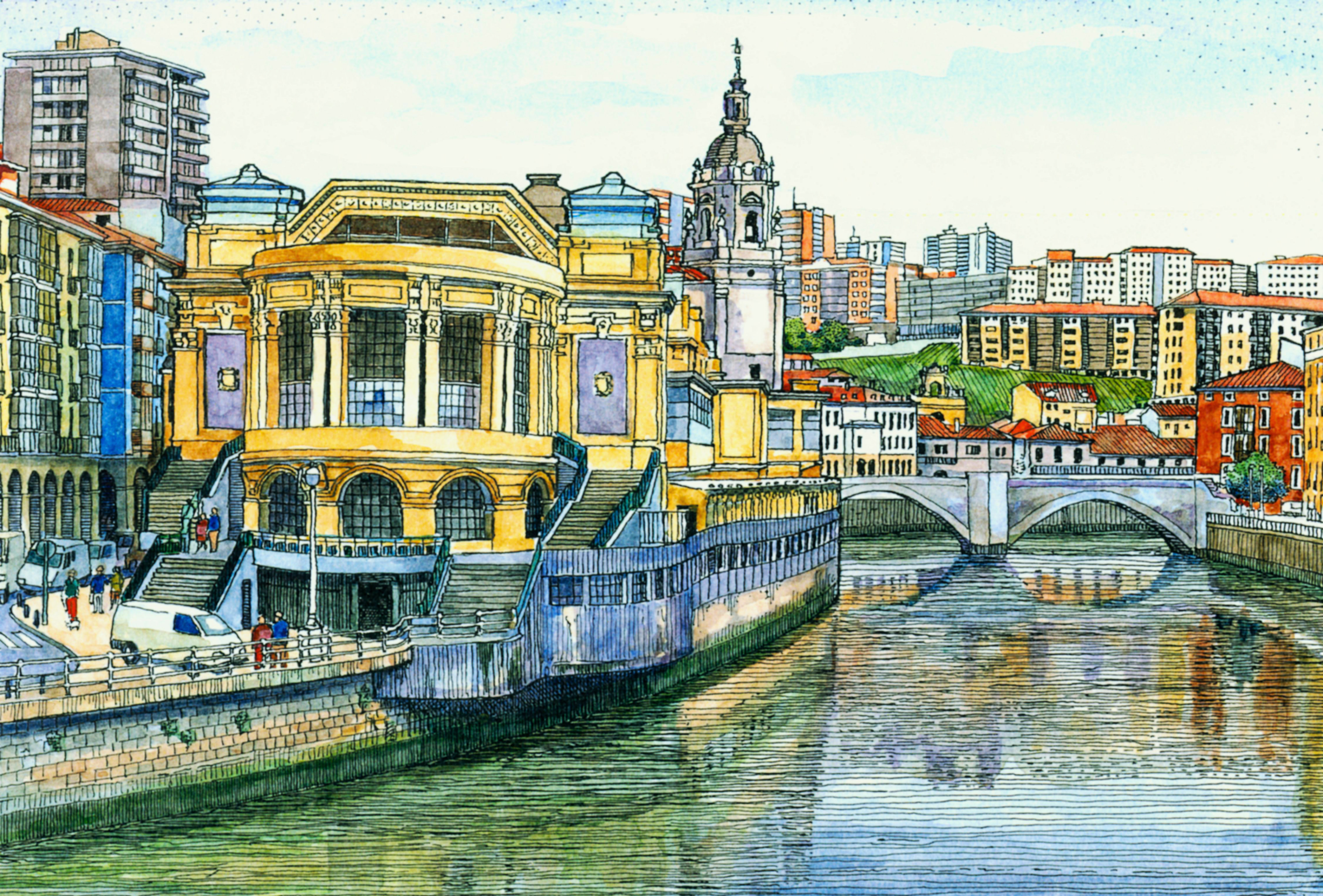Basque ethnography at a glance
Until well into the 1960s it was customary for local shepherds to keep a few shorn fleeces, or mantas, from the sheep for their own use in the farm. The wool from the fleeces was used as mattress filling and for spinning it into yarn and knitting yarn into clothing, mostly socks, laces for abarcas —rustic leather lace-up shoes— and waistcoats. (more…)

The flag of Oyón flies over Cachi, 2017. José Ángel Chasco.
On 22 January the city of Oyón (Rioja Alavesa) celebrates its patronal festival in honour of Saint Vincent and Saint Anastasius. The five main events of this major winter celebration are: Cachi’s rolling, the burning of the bonfire, the singing at dawn, the dance dedicated to the patrons, and the firework display during the procession. (more…)

Bride-to-be and her hens. Urduliz (Bizkaia), 2010. Akaitze Kamiruaga. Labayru Fundazioa Photographic Archive.
Once upon a time a stag party consisted of a celebration meal in a bar or a restaurant hosted by a bachelor for his male friends shortly before getting married. For her part, the bride-to-be gave a ladies’ tea party in her house, known as refresco, when she took the opportunity to show off the bridal trousseau to her guests. (more…)

View of St Anthony’s weathervane. Bilbao (Bizkaia). Watercolour by José Ignacio Gutiérrez López-Vázquez.
As a university student, I took an Easter holiday to Andalusia. On my return home I recounted what I had seen: the Mosque of Córdoba, the Alhambra of Granada, the Giralda of Seville.
Upon hearing this I remember my grandmother said to me: “Hain urrin joan zarie Jiralda ikusten Bilbon eukita?” (Why go all the way to Seville when there is a Giralda in Bilbao?). This was the first time I heard about the Giralda of Bilbao, which is, as she pointed out, mounted on top of the tower of St Anthony’s Church. I have ever since tried to gather testimonies which would ratify the information given by my grandmother but is not easy. (more…)


